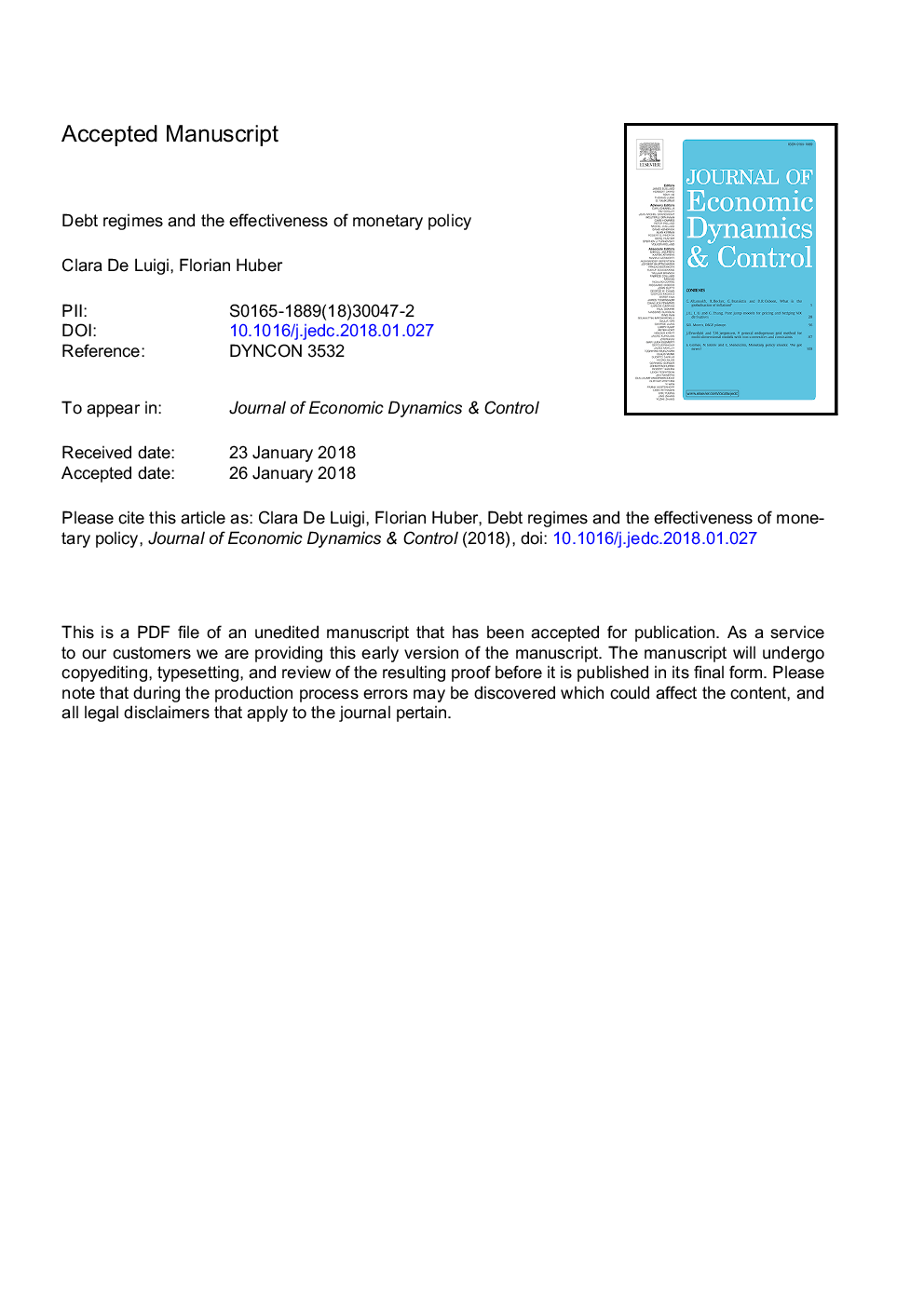| Article ID | Journal | Published Year | Pages | File Type |
|---|---|---|---|---|
| 7358462 | Journal of Economic Dynamics and Control | 2018 | 40 Pages |
Abstract
This paper develops a medium-scale non-linear model of the US economy. Our proposed model, a threshold vector autoregression with stochastic volatility, assumes that changes in government debt-to-GDP ratios drive the transition between regimes, capturing low and high debt regimes. The introduction of hierarchical priors enables us to flexibly shrink the empirical model towards the moments implied by a dynamic stochastic general equilibrium model. In the empirical application, we analyze regime-specific monetary policy shocks. Our findings indicate that the effect of monetary policy is less pronounced in 'high' debt regimes, pointing towards differences in the underlying monetary policy transmission mechanisms. Forecast error variance decompositions enable us to shed further light on the relative importance of monetary policy shocks within different debt regimes in terms of explaining the variance of forecast errors.
Related Topics
Physical Sciences and Engineering
Mathematics
Control and Optimization
Authors
Clara De Luigi, Florian Huber,
